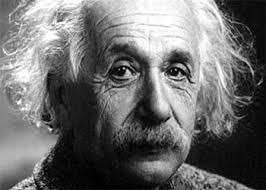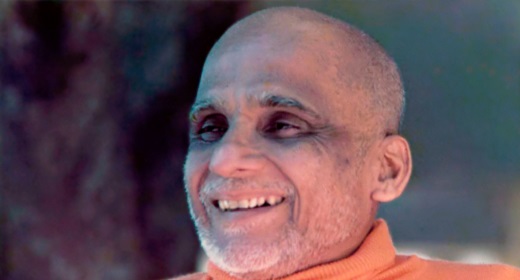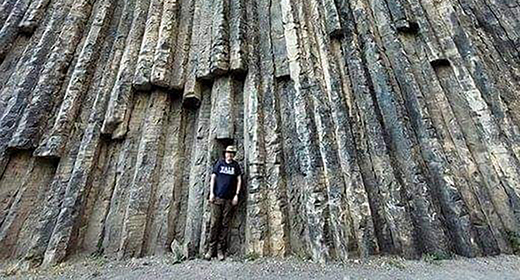by Robin McKie: The theory of general relativity is as relevant to us today as it was when it was formulated, as a discovery about space-time reveals.
 After working for half a century and spending £500m, scientists last week revealed that they have detected strange fluctuations in Earth’s orbit. Space-time is bent and then twisted round our planet as it rotates, announced researchers with Nasa’s Gravity Probe B project.
After working for half a century and spending £500m, scientists last week revealed that they have detected strange fluctuations in Earth’s orbit. Space-time is bent and then twisted round our planet as it rotates, announced researchers with Nasa’s Gravity Probe B project.
The effect is tiny but crucial, they added – and was predicted almost 100 years ago by Albert Einstein in his great theory of gravity, general relativity. According to Einstein, an apple falls to the ground not because it feels the force of Earth’s gravity but because the apple is responding to the curvature of space-time near the Earth’s surface caused by the planet’s huge mass. In the same way, the Sun bends space in a manner that allows Earth to revolve around it.
Crucially, the theory raised a host of other predictions that scientists have been confirming for the past century. The findings of Gravity Probe B are the latest in a long list of these many vindications of Einstein’s genius and reveal how his great theory touches our lives in unexpected ways.
“We have completed this landmark experiment of testing Einstein’s universe,” said project leader Francis Everitt, of Stanford University. “And Einstein survives.”
Everitt began work on Gravity Probe B in 1962 and has worked on nothing else since, although he had many close shaves, with the satellite being cancelled and then revived on seven occasions before it was eventually launched in 2004. Then, after the probe reached orbit, spurious electrical signals were found to be distorting data that it had sent back. It took five years’ study before scientists found how to extract clean data from it.
Results of the analyses of this data were revealed last week. They showed that Earth does indeed bend space-time. It was also found that, as our planet rotates, it drags space-time with it – a phenomenon known as frame-dragging. The effect is like spinning a spoon in a cup of tea, causing the liquid to start swirling round inside the cup.
These phenomena are tiny, it should be noted. In the case of frame-dragging, space around Earth turns at a rate of 37 one-thousandths of a second every year because our planet pulls it round as it revolves – a rate predicted by Einstein.
“The probe’s results are a great achievement, but we should not think of them as a new proof that general relativity is right,” said Graham Farmelo, physicist and author. “Einstein was shown to be correct long ago, only a few years after he came up with the theory. However, we are still testing out all its predictions. The results from Gravity Probe B are just the most recent, successful outcomes.”
In fact, the premise of Einstein’s theory of general relativity was proved within three years of its publication in 1916. British astronomer Arthur Eddington was involved in an expedition to Príncipe island in west Africa, where he photographed the total solar eclipse of 1919. The photographs showed that the positions of stars whose light rays passed near the Sun appeared to have been slightly shifted because their light had been curved by the Sun’s huge gravitational field. This was noticeable only during an eclipse because the Sun’s brightness would otherwise obscure the affected stars.
“Eddington presented these as a triumph for general relativity, and Einstein, who was known to physicists but not the public, became a star overnight,” said Farmelo.
For his part, Einstein never had any doubts that he was right. When asked how he would have reacted if Eddington’s observations had disproved his theory, he replied: “I would have felt sorry for the dear Lord. The theory is correct.”
Since then, scientists have produced many other confirmations. One example was provided by US astronomers Russell Hulse and John Taylor, who discovered two dense collapsed stars, known as neutron stars, that were in orbit around each other and that were losing energy that could only be explained through the gravitational radiation, another phenomenon predicted by Einstein. In 1993 Hulse and Taylor were awarded that year’s Nobel prize for physics.
“General relativity touches our lives in many unexpected ways,” added physicist Dr Charles Wang, of Aberdeen University. “Another effect that is predicted by general relativity is the phenomenon known as gravitational time dilation. This states that time slows down as gravitational strength increases, a fact that has been confirmed by GPS satellites. These carry atomic clocks that have to run at a different speed to those on the ground because gravity is greater there. If you didn’t, the world’s GPS system would break down.”
“Einstein’s theory of general relativity is one of the most beautiful pieces of scientific work in history,” added Farmelo. “But it is not the whole story. It explains how massive objects affect space and time, but it tells us little about how very small sub-atomic particles behave.”
This point was acknowledged by Wang. “We still have to test how gravity behaves at a sub-atomic, quantum level,” he said. “We hope to do that with a project called the Space-Time Explorer Quest, which the European Space Agency is now studying.”
Together with Wang’s group, scientists at Birmingham, the Rutherford-Appleton Laboratory and the National Physical Laboratory, along with German researchers, have proposed building a probe that would use caesium or rubidium atoms, cooled close to absolute zero, to test the effect of gravity at the sub-atomic level and, they hope, provide data that could reconcile relativity and quantum theory.
“That won’t be for another 10 years or more,” said Wang. “That means we are going to have a lot of work to do on general relativity for quite some time.”








































